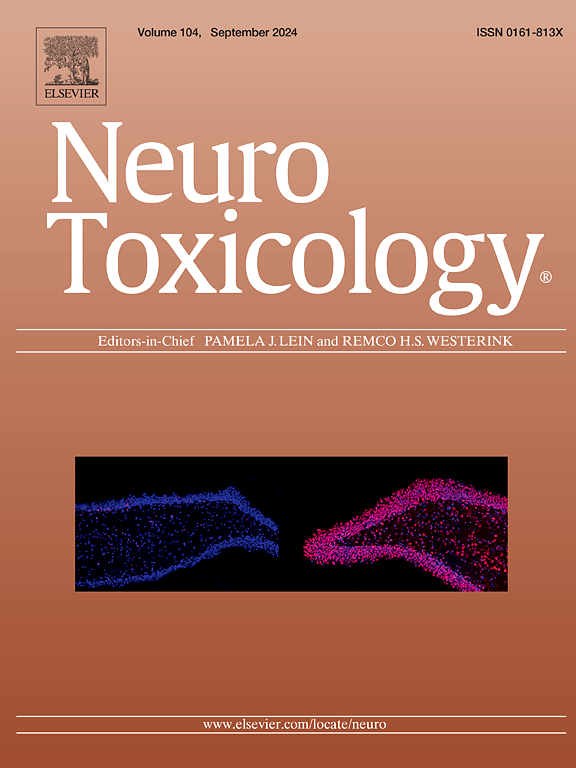Neuronal degeneration, mitochondrial dysfunction, and disturbance of movements induced by rotenone in the ascidian Styela plicata
IF 3.9
3区 医学
Q2 NEUROSCIENCES
引用次数: 0
Abstract
Parkinson's disease (PD), a movement disorder caused by dopaminergic degeneration in the midbrain, has been induced in various organisms after injection of different neurotoxins, such as rotenone (ROT), which affect mitochondrial complex I. Due to the conserved characteristics of ascidians, these animals constitute an interesting model for comparative and genetic studies of neurodegenerative diseases. In this study, we investigated the effects of ROT on the ascidian nervous system, evaluating apoptosis, catecholaminergic enzymes, behavioral deficits, and mitochondrial dysfunction. The study revealed morphological disorganization, inducing vacuolation in the ascidian brain. Neuronal death was confirmed by elevated transcriptional levels of caspase-3 and intense caspase-3 staining by immunofluorescence. In addition, there was reduced staining for dopa-decarboxylase (DDC), which is involved in dopamine biosynthesis. Furthermore, the mitochondria exhibited dysfunction in their membrane potential, followed by a decrease in the hydrolytic activity of ATP synthase and high transcriptional levels of ubiquitin. Finally, after administration of the drug l-3,4-dihydroxyphenylalanine (L-DOPA), recovery of motor movements was observed, as revealed by behavioral tests. Overall, the current research provides new data on the effects of rotenone on the ascidian brain, inducing neuronal death, mitochondrial dysfunction, and siphon movement disorders in the ascidian Styela plicata.
鱼藤酮诱导的海马褶皱海鞘神经元变性、线粒体功能障碍和运动障碍
帕金森病(PD)是一种由中脑多巴胺能变性引起的运动障碍,在多种生物体内注射不同的神经毒素,如鱼藤酮(ROT),会影响线粒体复合体i。由于海鞘的保守特性,这些动物构成了神经退行性疾病的比较和遗传研究的有趣模型。在这项研究中,我们研究了ROT对海鞘神经系统的影响,评估了细胞凋亡、儿茶酚胺能酶、行为缺陷和线粒体功能障碍。该研究揭示了海鞘脑的形态紊乱,诱导空泡形成。通过caspase-3转录水平升高和免疫荧光检测caspase-3染色,证实神经元死亡。此外,多巴脱羧酶(DDC)的染色减少,DDC参与多巴胺的生物合成。此外,线粒体表现出膜电位功能障碍,ATP合酶水解活性降低,泛素转录水平升高。最后,给药l-3,4-二羟基苯丙氨酸(L-DOPA)后,观察运动恢复,如行为测试所示。总的来说,本研究为鱼藤酮对海鞘脑的影响提供了新的数据,在海鞘中诱导神经元死亡、线粒体功能障碍和虹吸运动障碍。
本文章由计算机程序翻译,如有差异,请以英文原文为准。
求助全文
约1分钟内获得全文
求助全文
来源期刊

Neurotoxicology
医学-毒理学
CiteScore
6.80
自引率
5.90%
发文量
161
审稿时长
70 days
期刊介绍:
NeuroToxicology specializes in publishing the best peer-reviewed original research papers dealing with the effects of toxic substances on the nervous system of humans and experimental animals of all ages. The Journal emphasizes papers dealing with the neurotoxic effects of environmentally significant chemical hazards, manufactured drugs and naturally occurring compounds.
 求助内容:
求助内容: 应助结果提醒方式:
应助结果提醒方式:


